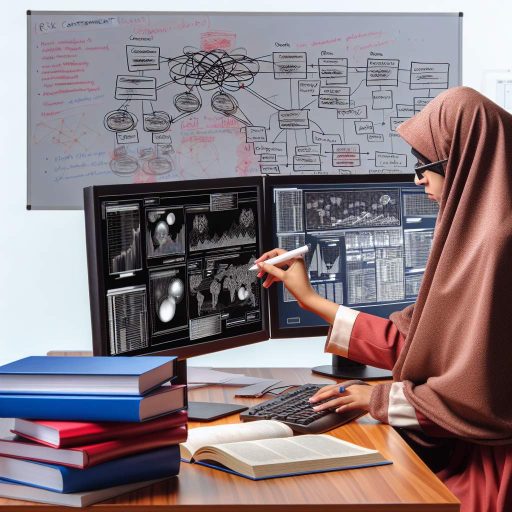Introduction
A Technical Account Manager (TAM) serves as a vital link between a company and its clients.
They ensure clients successfully use the company’s products or services.
TAMs focus on understanding client needs and maximizing product value.
Their role blends technical expertise with relationship management, making it unique and crucial.
Key skills significantly enhance a TAM’s effectiveness in their role.
A successful TAM not only acts as a liaison but also becomes a trusted advisor.
Clients rely on them for guidance on best practices and innovative solutions.
Without essential skills, a TAM might struggle to meet client demands or address technical challenges.
Thus, skill development is fundamental for TAMs aiming for success.
This blog post will outline the critical skills that contribute to a successful TAM.
It will delve into various competencies, including communication, technical expertise, problem-solving, and project management.
Understanding these skills can guide current and aspiring TAMs in strengthening their capabilities and enhancing their career prospects.
Moreover, we will discuss the importance of soft skills, such as empathy and adaptability.
These traits enable TAMs to connect with clients on a deeper level.
They promote trust, fostering long-term relationships that drive business growth.
Finally, we will touch on continuous learning as an essential aspect of a TAM’s career progression.
In the rapidly changing tech landscape, keeping skills up to date is vital.
This commitment to learning helps TAMs stay relevant and effective in addressing client needs.
The role of a Technical Account Manager is dynamic and multifaceted.
A combination of technical and interpersonal skills is necessary for success.
Transform Your Career Today
Unlock a personalized career strategy that drives real results. Get tailored advice and a roadmap designed just for you.
Start NowThis blog post will provide insights into the key skills that define successful TAMs.
It will serve as a valuable resource to enhance skills and understanding in this important role.
In today’s rapidly evolving technological landscape, having technical expertise is crucial for a Technical Account Manager (TAM).
This ensures that both the client and the organization receive maximum value from their interactions.
Below, we highlight the key components of technical expertise that contribute to a TAM’s success.
Importance of a Strong Technical Background
Possessing a robust technical background enables a TAM to build trust and credibility with clients.
Clients look for professionals who understand their technology and can help them optimize its use.
Here are several critical aspects to consider:
- In-depth Product Knowledge: A TAM should have comprehensive knowledge of their company’s products.
- Industry Insight: Understanding the industry landscape helps in providing tailored advice to clients.
- Problem-Solving Skills: Clients often face technical challenges.
- Technical Certifications: Earning relevant certifications boosts credibility.
A strong technical background equips TAMs to troubleshoot effectively and propose solutions efficiently.
Ability to Understand and Communicate Technical Information
A technical account manager serves as a bridge between technical teams and clients.
Effective communication ensures that both parties understand each other’s needs and expectations.
Here’s why this skill is essential:
- Translating Technical Jargon: TAMs must simplify complex technical concepts.
- Active Listening: Engaging with clients through active listening fosters better relationships.
- Bespoke Recommendations: TAMs can tailor technical explanations to the client’s level.
- Documentation Skills: Clear and concise documentation is key.
Continual Learning and Staying Updated on Industry Trends
The technology landscape changes rapidly.
To remain effective, TAMs must commit to continuous learning.
Here are several strategies for staying current:
- Participate in Webinars: Joining webinars hosted by industry experts offers insights.
- Networking Events: Engaging in networking events allows TAMs to learn from peers.
- Reading Industry Publications: Subscribing to relevant journals keeps TAMs informed.
- Online Courses: Taking online courses enhances skills and knowledge.
- Vendor Training Sessions: Maintaining relationships with technology vendors offers learning opportunities.
Bridging Technical Solutions and Client Needs
Effectively connecting technical solutions to client needs is a hallmark of a successful TAM.
Recognizing clients’ unique requirements and aligning them with the right solutions creates significant value.
Here’s how to achieve this:
- Understanding Business Goals: A TAM should familiarize themselves with a client’s business objectives.
- Project Management Skills: Managing timelines and deliverables helps ensure implementation.
- Feedback Loops: Establishing regular feedback loops with clients enhances the relationship.
Building Strong Relationships
Building rapport with clients is vital for a TAM’s success.
Showcase Your Business Today
Reach thousands of readers actively exploring professional services. Publish your business profile and grow your audience now.
Publish NowStrong relationships lead to better communication and ultimately improve client satisfaction.
The following strategies can help:
- Regular Check-ins: Frequent communication keeps clients engaged and informed.
- Establishing Trust: Being transparent and honest builds trust.
- Listening to Client Feedback: Valuing client feedback is essential.
- Tailored Interactions: Personalizing interactions can enhance the relationship.
These strategies enhance communication and overall satisfaction.
Communication Skills for Technical Account Managers
Communication plays a vital role in the success of a Technical Account Manager (TAM).
This skill set encompasses expressing ideas clearly, listening actively, and addressing client needs.
Without strong communication skills, a TAM may struggle to build relationships and drive client success.
Effective Communication with Clients, Team Members, and Stakeholders
To be an effective Technical Account Manager, you must demonstrate excellent communication with various parties.
This includes not only clients but also colleagues and stakeholders.
Here are key elements to consider:
- Building Trust: Establishing trust requires open and honest dialogue.
- Clarity in Messaging: Ensure your messages are straightforward.
- Adapting Communication Style: Tailor your communication approach.
- Regular Updates: Keep all parties informed about project progress.
- Facilitating Collaboration: Encourage collaboration among team members.
Active Listening and Empathizing with Clients’ Needs
Active listening is paramount for a successful TAM.
It allows you to fully understand client challenges and expectations.
Consider the following strategies:
- Show Genuine Interest: Pay full attention when clients speak.
- Ask Clarifying Questions: If something is unclear, ask questions.
- Summarize and Reflect: Periodically summarize discussions.
- Validate Feelings: Recognize and validate clients’ emotions.
- Avoid Interrupting: Let clients express their thoughts completely.
Clear and Concise Communication of Complex Technical Issues
As a Technical Account Manager, you often tackle complex technical matters.
It’s essential to convey these topics understandably.
Here are some practices to adopt:
- Break Down Information: Divide complex issues into smaller parts.
- Use Analogies: Employ analogies to explain intricate concepts.
- Avoid Technical Jargon: Speak in terms that resonate with clients’ experiences.
- Visual Aids: Utilize diagrams or flowcharts to illustrate information.
- Encourage Questions: Create an environment where clients feel comfortable asking.
Building Relationships through Communication
Successful Technical Account Managers excel at building relationships through communication.
Here are important relationship-building techniques:
- Be Approachable: Maintain a friendly demeanor.
- Follow Up: After meetings, follow up with clients.
- Be Available: Make yourself accessible.
- Celebrate Success: Recognize achievements with clients.
- Personalize Communication: Tailor interactions based on client preferences.
Enhancing Communication Skills through Continuous Improvement
The journey to mastering communication skills is ongoing.
Technical Account Managers should prioritize personal development in this area.
Here are ways to enhance your communication abilities:
- Seek Feedback: Regularly ask for feedback from clients and colleagues.
- Attend Workshops: Participate in communication workshops.
- Practice Active Listening: Make a conscious effort in everyday conversations.
- Read and Learn: Enhance your vocabulary through reading.
- Join Professional Networks: Engage with peers in professional organizations.
Effective communication enhances client relationships, fosters trust, and improves problem-solving efforts.
By actively listening and adapting communication techniques, TAMs can significantly impact their clients’ success.
Continuous improvement in communication skills will ensure that managers exceed client expectations.
These efforts lead to long-lasting partnerships.
You Might Also Like: Future Trends in Blockchain Development to Watch
In today’s fast-paced technology world, technical account managers (TAMs) play a crucial role in the success of organizations.
Their core responsibility revolves around nurturing client relationships and ensuring customer satisfaction.
One of the essential skills that distinguish a successful TAM is problem-solving.
This skill requires a nuanced understanding of technology, a keen sense of customer needs, and the ability to make sound decisions under pressure.
Analyzing Complex Problems
Effective problem-solving starts with the ability to analyze complex issues.
A successful TAM observes client challenges and breaks them down into manageable components.
This analysis enables TAMs to grasp the root causes of problems quickly.
It empowers them to identify the most effective strategies for resolution.
- Identification of Patterns: TAMs need to recognize recurring issues. Identifying these patterns helps in understanding underlying causes and prevents future occurrences.
- Data-Driven Decision Making: Leveraging analytics to inform decisions is vital. Using data allows TAMs to formulate tailored solutions that resonate with customers’ specific needs.
- Stakeholder Consultation: Engaging with various stakeholders is key. TAMs benefit from gathering insights from different teams to form a comprehensive view of the problem.
Developing Innovative Solutions
A TAM’s ability to devise innovative solutions is fundamental in a competitive landscape.
Meeting unique customer needs often means integrating creative thinking into resolution strategies.
- Leveraging Technology: Familiarity with the latest technologies allows TAMs to propose innovative solutions. Understanding cutting-edge tools and platforms gives clients options that may not be on their radar.
- Flexibility and Adaptability: TAMs must be ready to pivot when solutions do not work as anticipated. Adaptability ensures that TAMs can adjust strategies to meet evolving client demands.
- Client Engagement: Involving clients in the problem-solving process fosters collaboration. This engagement reinforces trust and can lead to better solution acceptance.
Quick Decision-Making Under Pressure
Technological challenges often arise unexpectedly.
A successful TAM must exhibit quick decision-making skills, especially when clients face urgent problems.
The ability to make effective choices in high-pressure situations is invaluable.
- Prioritization of Issues: TAMs must assess problems quickly and determine which require immediate attention. Prioritization helps allocate resources efficiently and tackles critical issues first.
- Confidence in Decision-Making: Confidence plays a crucial role in effective decision-making. TAMs must trust their instincts and knowledge when providing solutions on the spot.
- Scenario Planning: Envisioning potential outcomes of different decisions aids in making informed choices. Assessing pros and cons quickly streamlines the decision-making process.
Collaborating with Technical Teams
Collaboration is another essential aspect of a TAM’s role.
Working closely with technical teams facilitates efficient troubleshooting and issue resolution.
Showcase Your Business Today
Reach thousands of readers actively exploring professional services. Publish your business profile and grow your audience now.
Publish NowThis teamwork ensures that every problem receives a comprehensive solution.
- Building Strong Relationships: Strong connections with technical teams enhance communication and collaboration. Building rapport encourages team members to share insights openly.
- Clear Communication: TAMs must convey client concerns clearly to technical teams. Ensuring everyone is on the same page is crucial for effective problem resolution.
- Joint Problem Solving: Working together to address issues fosters innovative solutions. Collaboration between TAMs and technical teams often leads to more effective outcomes.
Continuous Learning and Improvement
The technology landscape evolves quickly.
This rapid change necessitates continuous learning for TAMs to maintain their problem-solving skills.
- Staying Updated: Keeping abreast of industry trends and advancements ensures TAMs offer up-to-date solutions. Subscribing to tech journals and participating in webinars can enhance knowledge.
- Feedback Mechanisms: Implementing feedback systems from clients can provide invaluable insights for improvement. Constructive criticism helps TAMs refine their approaches and address gaps.
- Professional Development: Pursuing certifications and training programs strengthens problem-solving capabilities. Investing in skills development builds credibility and expertise.
Organizations that recognize the value of strong problem-solving skills in their TAMs will not only see increased client satisfaction but also improved retention rates.
As the technological landscape continues to shift, the role of technical account managers becomes more critical.
Embracing a culture that prioritizes problem-solving skills is essential for ongoing success.
Discover More: Essential Tools for E-commerce Specialists
Project Management Skills
Successful Technical Account Managers (TAMs) need excellent project management skills.
These skills are vital for organizing, prioritizing, and executing tasks efficiently.
Effective project management leads to better customer satisfaction and long-term relationships.
This section outlines the essential aspects of project management that every TAM should master.
Organizing and Prioritizing Tasks Effectively
Task organization forms the foundation of effective project management.
TAMs manage numerous client accounts and projects simultaneously.
Here are some key strategies to improve task organization:
- Use Task Management Tools: Utilize applications like Asana, Trello, or Jira. These tools help create, assign, and track tasks.
- Implement the Eisenhower Matrix: Categorize tasks based on urgency and importance. This method helps prioritize tasks effectively.
- Set Clear Objectives: Define project goals and outcomes. Clear objectives guide your task prioritization.
- Regularly Review and Adjust: Conduct weekly reviews of tasks. Adjust priorities based on new information or feedback.
- Communicate with the Team: Ensure all team members are aware of priorities. Regular updates prevent misunderstandings and delays.
Setting Realistic Timelines
Creating realistic timelines is crucial for successful project delivery.
TAMs work on multiple projects and must manage expectations.
Here are effective strategies for setting timelines:
- Assess Task Duration: Estimate how long each task will take. Consult team members for their input.
- Consider Dependencies: Identify tasks that rely on others. Factor these dependencies into your timeline calculations.
- Incorporate Buffer Time: Allow extra time for unforeseen delays. Buffer time helps accommodate last-minute changes.
- Communicate with Stakeholders: Discuss timelines with clients and team members. Engage stakeholders in the timeline-setting process.
- Monitor Progress Closely: Regularly check-in on project timelines. Adjust deadlines if team members struggle to meet them.
Delivering Projects on Time
Timely project delivery enhances the credibility of a TAM.
Meeting deadlines leads to satisfied clients and referrals.
To deliver projects on time, incorporate these practices:
- Set Milestones: Break projects into smaller tasks with specific milestones. Celebrate milestones to keep the team motivated.
- Track Progress Continually: Use project management software for real-time updates. Monitoring keeps everyone accountable for their tasks.
- Address Bottlenecks Early: Identify points of delay as soon as possible. Work with the team to find solutions quickly.
- Encourage Open Communication: Foster a culture where team members voice concerns. Open lines of communication solve problems before they escalate.
- Review Project Outcomes: Once a project concludes, conduct a review. Analyze what worked and what didn’t for improved future performance.
Balancing Multiple Projects
Managing multiple projects involves deft juggling skills.
Technical Account Managers often face this challenge.
Here’s how to balance projects effectively:
- Prioritize Projects: Not all projects carry the same weight. Focus on high-impact projects first.
- Create a Master Schedule: Compile all project deadlines into one document. This overview helps you see the bigger picture.
- Delegate Responsibilities: Distribute tasks among team members. Strong delegation frees up time for strategic planning.
- Use Time-Blocking Techniques: Schedule specific time slots for each project’s tasks. This method centers your focus and enhances productivity.
- Stay Organized Digitally: Keep a well-organized digital workspace. This organization reduces stress and confusion.
Adapting to Changing Priorities
In the fast-paced tech world, priorities change frequently.
TAMs must adapt to these shifts effortlessly.
Follow these tactics for staying flexible:
- Maintain a Flexible Mindset: Acknowledge that change is inevitable. Embrace it rather than resist it.
- Stay Informed: Regularly gather updates from clients and stakeholders. Knowledge of changing priorities helps you adjust accordingly.
- Regularly Reassess Your Priorities: Set aside time each week to evaluate project priorities. Adjust tasks based on the latest information.
- Encourage Adaptive Planning: Foster a culture of flexibility within your team. Encourage team members to suggest alternative approaches.
- Utilize Agile Methodologies: Adopt agile frameworks to enhance responsiveness. Agile methodologies promote rapid adjustments to shifting project needs.
Mastering project management skills is crucial for every Technical Account Manager.
Organizing and prioritizing tasks effectively leads to successful project delivery.
Setting realistic timelines enhances trust and collaboration with clients.
Balancing multiple projects while adapting to changing priorities showcases agility and resilience.
By cultivating these skills, TAMs can build and maintain strong client relationships.
Discover More: Impact of Digital Transformation Specialists in Business

Building Strong Relationships with Clients
Strong client relationships are essential for a Technical Account Manager (TAM).
They foster trust and promote long-term partnerships.
A TAM must develop rapport with clients to understand their specific needs.
This rapport often results in better communication and collaboration.
Key Strategies for Relationship Building
- Regular Communication: Schedule frequent meetings to check in on clients.
- Active Listening: Listen to client concerns attentively.
- Personal Touch: Remember important client events, such as anniversaries or company milestones.
- Empathy and Understanding: Recognize that each client faces unique challenges.
- Feedback Loop: Create a system for clients to share their feedback.
Understanding Clients’ Business Goals
A TAM’s understanding of a client’s business goals is vital for providing effective solutions.
Clients seek partners who comprehend their objectives and challenges.
Aligning your technical solutions with their goals enhances your value as a TAM.
Steps to Understand Clients’ Business Goals
- Research: Study the client’s industry, competitors, and market dynamics.
- In-Depth Interviews: Conduct interviews with key stakeholders.
- Define Success Metrics: Work with clients to establish clear success metrics.
- Regular Goal Reassessments: Schedule periodic reviews of business goals.
- Document Everything: Keep concise records of insights and discussions.
Aligning Technical Solutions
Once you understand the clients’ business goals, the next step is alignment.
Showcase Your Business Today
Reach thousands of readers actively exploring professional services. Publish your business profile and grow your audience now.
Publish NowOffering tailored technical solutions that meet their objectives is crucial.
Misalignment can lead to dissatisfaction and erode trust.
How to Align Solutions Effectively
- Collaborative Solution Design: Involve clients in designing solutions.
- Customized Proposals: Prepare solution proposals that directly address their business goals.
- Demonstrate ROI: Employ case studies or examples to showcase how your solutions drive ROI.
- Utilize Technology: Leverage appropriate technologies that enhance client operations.
- Training and Support: Provide various training options for clients.
Providing Excellent Customer Service and Support
Outstanding customer service is critical in a TAM role.
Clients expect more than just technical expertise; they want a partner who genuinely cares.
Ensuring your clients feel supported boosts satisfaction and encourages loyalty.
Principles for Delivering Exceptional Customer Service
- Proactive Approach: Anticipate potential issues before they arise.
- 24/7 Availability: Offer support outside regular hours if possible.
- Efficient Problem-Solving: Develop processes to address issues efficiently.
- Client Feedback Utilization: Regularly gather feedback on the services provided.
- Personalized Service: Tailor your approach based on individual client needs.
Gain More Insights: Emerging Trends in Hardware Engineering Technology
In the role of a Technical Account Manager (TAM), team collaboration stands as a vital element for success.
TAMs must interact proficiently with various groups, especially technical teams.
This collaboration leads to the effective delivery of tailored solutions to clients.
Working closely with these teams enhances the quality of outcomes.
It ensures that technical objectives align with customer needs effectively.
Working Closely with Technical Teams
Successful collaboration with technical teams requires several key strategies:
- Establish Clear Communication: Clear lines of communication facilitate understanding. Maintaining an open dialogue encourages team members to share ideas and insights.
- Understand Technical Constraints: Familiarity with the technical landscape is essential. Knowing the limitations helps set realistic goals and expectations.
- Regular Meetings: Schedule consistent catch-ups with technical teams. These meetings provide an opportunity to discuss project statuses, challenges, and solutions.
- Encourage Knowledge Sharing: Create environments that promote knowledge transfer. This practice fosters innovation and keeps all team members informed.
By applying these strategies, a Technical Account Manager strengthens the bond with technical teams.
This partnership leads to faster issue resolution and enhances problem-solving capabilities.
Providing Feedback and Guidance
Effective feedback is invaluable in improving team performance. As a TAM, offering constructive suggestions plays a significant role.
Here’s how to provide feedback effectively:
- Be Specific: Vague feedback can confuse team members. Highlight specific behaviors and outcomes for clarity.
- Focus on the Positive: Balancing criticism with praise promotes morale. Acknowledging strengths encourages teams to maintain those behaviors.
- Set Actionable Goals: Provide actionable recommendations along with feedback. This approach helps teams understand how to improve.
- Follow Up: After giving feedback, it’s essential to follow up. Check on progress, and offer additional support if needed.
Providing effective feedback nurtures a culture of continuous improvement. This ultimately enhances the team’s overall performance and delivers better solutions to clients.
Collaboration with Sales and Marketing Teams
The role of a TAM extends beyond technical teams.
Collaboration with sales and marketing teams significantly drives business growth.
This collaboration follows several guidelines:
- Understand Market Trends: Stay informed about industry trends. Understanding market dynamics helps tailor strategies to meet client demands.
- Share Customer Insights: Provide invaluable feedback from clients to sales and marketing teams. This information guides them in crafting relevant messaging.
- Participate in Strategy Meetings: Attend planning sessions with sales and marketing teams. Your technical expertise adds value and enhances strategy formulation.
- Develop Joint Solutions: Work alongside these teams to design bundled solutions. This collaboration can accelerate sales and build customer loyalty.
Through collaborative efforts, TAMs can bridge the gap between the technical realm and market needs.
This synergy creates comprehensive solutions that meet client expectations and drive growth.
Benefits of Team Collaboration
Effective collaboration among teams brings numerous benefits, such as:
- Improved Communication: Open lines of communication enhance teamwork. Teams that communicate effectively can adapt quickly to changes.
- Faster Problem-Solving: Collaborative efforts lead to quicker identification and resolution of issues. Diverse perspectives contribute to innovative solutions.
- Increased Employee Satisfaction: Positive team dynamics foster a supportive work environment. Satisfied employees often produce higher-quality work.
- Enhanced Client Satisfaction: Delivering cohesive and effective solutions satisfies clients. Happy clients are likely to become repeat customers.
Each of these benefits emphasizes the importance of collaboration.
For a Technical Account Manager, fostering such collaboration translates to successful project outcomes and satisfied clients.
Challenges in Team Collaboration
While collaboration is beneficial, it often comes with challenges:
- Communication Barriers: Miscommunication can lead to misunderstandings. Ensure clarity in all interactions to mitigate this risk.
- Differing Priorities: Different teams may focus on conflicting goals. Aligning interests involves understanding varying perspectives.
- Resource Constraints: Limited resources can hinder collaborative efforts. Assess resources regularly to optimize team efficiency.
- Resistance to Change: Team members may resist new collaborative tools or processes. Foster an environment that embraces adaptation.
By identifying these challenges, TAMs can proactively address them.
Effective strategies make collaboration smoother and more productive.
Skills for a Successful Technical Account Manager
A successful Technical Account Manager (TAM) requires a diverse skill set.
Strong communication skills help bridge the gap between clients and technical teams.
Analytical skills enable TAMs to assess client needs and provide tailored solutions.
Furthermore, technical expertise allows them to understand and explain complex technologies effectively.
Additionally, relationship-building skills are essential.
TAMs should cultivate trust and rapport with clients for long-lasting partnerships.
Problem-solving abilities empower them to address challenges swiftly and efficiently.
These skills combine to create a well-rounded TAM who can navigate dynamic environments.
Continuous learning and development remain vital in this role.
The tech landscape evolves rapidly, requiring TAMs to stay updated with new trends and tools.
Engaging in workshops, webinars, and industry events fosters growth and knowledge expansion.
Embracing lifelong learning enhances a TAM’s value to their organization and clients.
Aspiring Technical Account Managers should actively practice and hone these essential skills.
Showcase Your Business Today
Reach thousands of readers actively exploring professional services. Publish your business profile and grow your audience now.
Publish NowThey can start by seeking mentorship from experienced professionals.
Utilizing resources like online courses or books provides additional support for skill enhancement.
Hands-on experience through internships or volunteer opportunities can also make a difference.
The journey to becoming a successful Technical Account Manager is demanding yet rewarding.
It requires dedication and a commitment to personal and professional growth.
By focusing on the key skills outlined above, aspiring TAMs can position themselves for success in this impactful role.
Additional Resources
Technical Account Manager for the Automotive Team in Santa Clara …
Technical Account Manager, Google Cloud Consulting — Google …
[E-Books for Sale]
The Big Book of 500 High-Paying Jobs in America: Unlock Your Earning Potential
$19.99 • 500 High-Paying Jobs • 330 pages
Explore 500 high-paying jobs in America and learn how to boost your career, earn more, and achieve success!
See All 500 High-Paying Jobs of this E-Book
1001 Professions Without a Degree: High-Paying American Jobs You Can Start Now
$19.99 • 1001 Professions Without a Degree • 174 pages
Discover 1001 high-paying jobs without a degree! Unlock career tips, skills, and success strategies for just $19.99!




